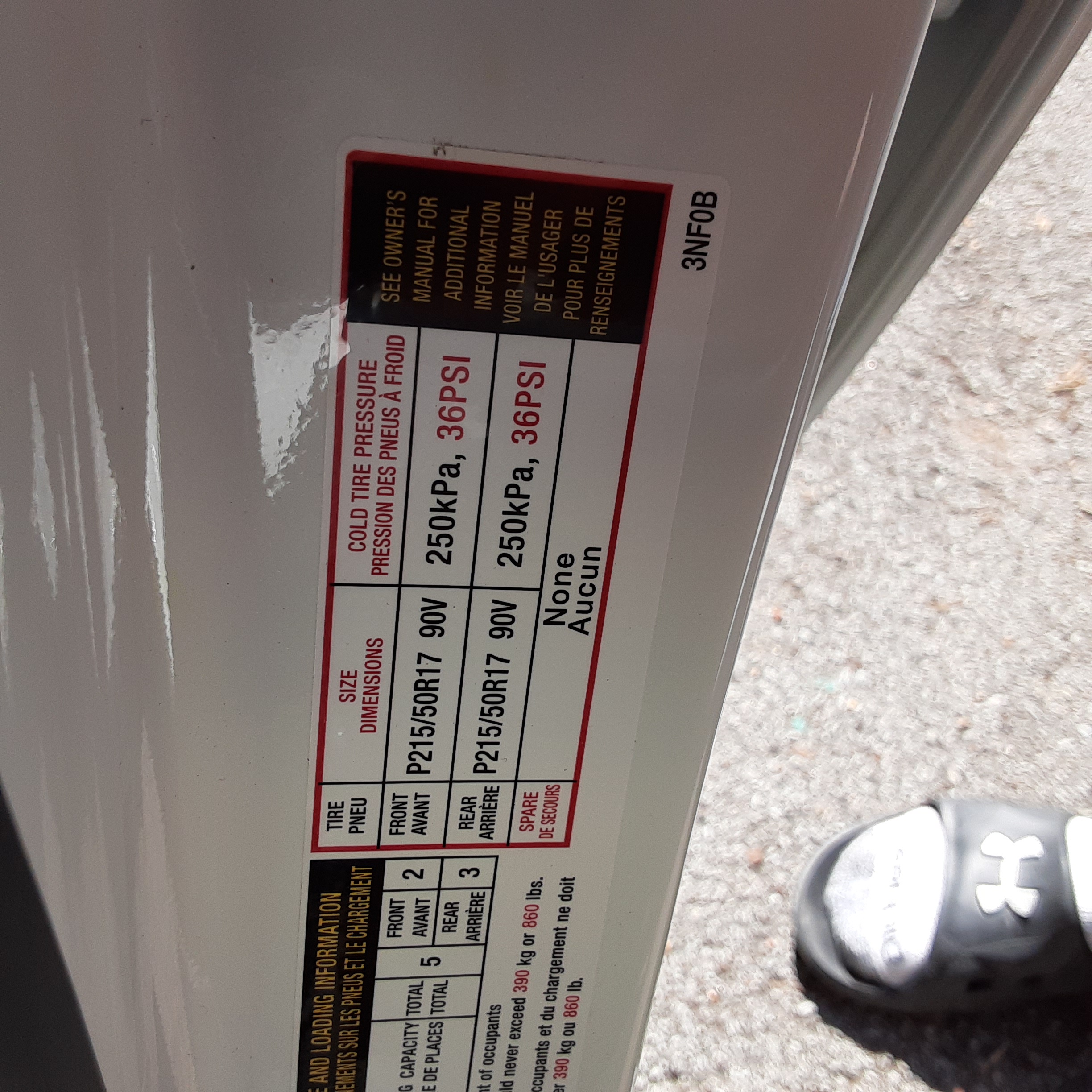frontrangeleaf
Well-known member
GerryAZ said:Personally, I disagree with the general statement that stopping distance is increased with higher tire pressures. My experience with 3 different LEAFs (all heavy cars) is that wet stopping distance (at least with better quality tires) is improved with higher pressures than the 36 psi recommended by Nissan. I believe this is due to tire distortion (contact patch distortion and tread grooves closing) under braking loads. In my climate, with all of the tires I have used on the LEAFs except the OEM 17-inch Michelins, the stopping distance is significantly reduced on wet pavement with 44 psi compared to 36 psi. It is true that braking traction is generally reduced with higher tire pressures on a lighter weight car. Both wet and dry braking distance with the OEM Michelins were so bad that pressure changes did not help so I replaced them with much better tires.
Note, the door placard on my 2019 SL Plus recommends 36 psi which is the same as recommended for my 2015 SL. They both came from the factory with 215/50 R17 Michelin Energy Saver A/S tires and the 2019 is considerably heavier because it has a larger battery pack. This indicates to me that Nissan did not really consider the weight in determining the recommended inflation pressure.
No question that tire design is a big factor in braking performance, and it seems that the stock Michelins are not optimized for braking distance. I think you can beat them with almost any tire on that spec... Pretty bad that way. They _are_ quiet. and they do seem to offer good range at a given pressure.
I took the discussion above to mean "excessive pressure relative to load" can lead to longer braking distances. I don't think there's any doubt about that at the end of the day.
Interesting point about Nissan not doing the work to raise the recommended tire pressures for the heavier car. Shame on them if that's the backstory. It seems to cast more doubt on the manufacturer recommended pressures, which already tend low as I've noted above. But that said, anything above 35 psi will meet the stock tire's load rating, as I've explained, so it's not about that. As long as the load rating is high enough to also support the heavier car's weight, it's technically OK. They should have switched to an XL tire and then set the pressures accordingly. I think the 40kwh models should have them too. Budget issue I bet. XL tires cost more.
I'm also not super keen on the stock tires maxing out at 44psi. In Colorado, where we routinely see 30 F swings in daily high to low, that's a 3 psi swing. You could exceed the max cold rating in the course of a day if you park in the sun on a warm day, having set your pressures as recommended by folks here on a chilly night. Not beyond the imagination. Another reason to dump these tires as soon as we've worn them out.

